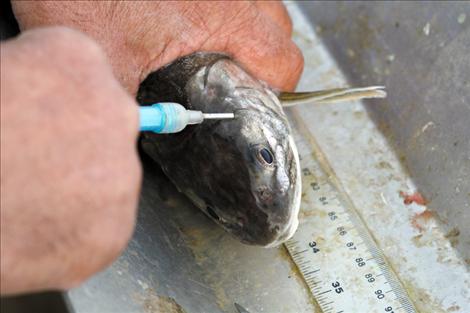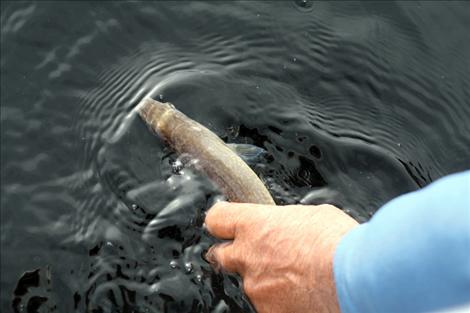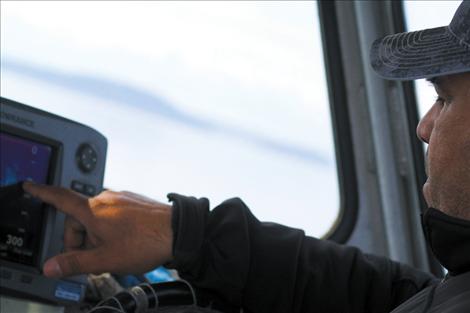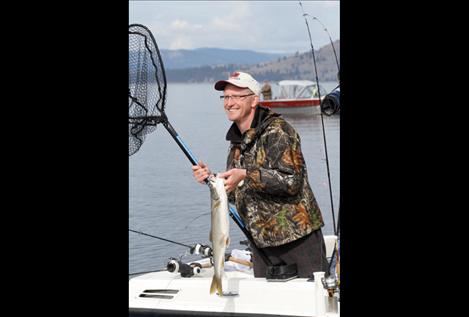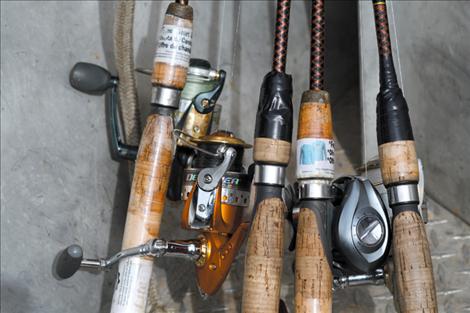Lake trout tagged for fishing tourney
Hey savvy news reader! Thanks for choosing local.
You are now reading
1 of 3 free articles.
POLSON — Now in its 12th year, the twice-annual Mack Days fishing event is aimed at reducing Flathead Lake’s lake trout population and increasing the native bull and cutthroat trout population.
Perhaps the most intriguing aspect of the tournament, however, are the tagged trout.
An extremely small pit tag inserted into the left cheek of more than 4,000 lake trout could be an angler’s ticket to a new boat, car, trailer, or all of the above.
According to a statement from the Confederated Salish and Kootenai Tribes, “Mack Days Events are sponsored by the Confederated Salish and Kootenai Tribes and are sanctioned by Montana Fish, Wildlife, and Parks and are a management tool developed to implement the Flathead Lake and River Co-management Plan. The events are used as a tool to slowly suppress non-native lake trout in Flathead Lake to benefit native bull trout and westslope cutthroat trout.”
The contest runs Fridays, Saturdays and Sundays until May 10. After May 10, anglers can fish for 10 straight days until the tournament’s end May 19. Up to $150,000 in cash and prizes will be paid out to anglers at the conclusion of the
tournament. Anglers can win these prizes through contests spanning the length of Mack Days, including competitions for smallest fish, largest fish, most fish, ladies’ categories, youth categories, over-70 categories, captains’ prizes and weekend prizes.
But the big money is already in the lake.
One $10,000 tag, five $5,000 tags, 10 $1,000 tags and more than 4,000 tags valued between $100 and $500 have been released into the lake. This means that at least $535,000 is swimming in Flathead Lake, ripe for the taking.
Just last week, nine anglers from Kalispell to Florence brought in $1,700 worth of tagged lake trout.
High-value tags were implanted two weeks before the tournament, but CSKT officials must catch, tag and release new fish every week as anglers catch and cash in on the tagged trout.
Fishery technicians Joe Santos, Mountain Wahl and Rich Folsom carry out this duty every week during Mack Days. Most of the soon-to-be-tagged fish come from Mack Days anglers.
As Santos explained, the tagging crew travels from boat to boat, taking live, unwanted fish from anglers willing to part with them. Fishery techs record the anglers’ contest numbers while taking in the trout, so anglers still get credit on the leader board for fish they’ve caught.
“After we’ve collected ‘X’ amount of fish, we’ll park the boat, take the lengths of the fish and clip their adipose fin on their back before inserting a tag into the fish’s left cheek,” Santos said, explaining that the adipose fin is clipped so fisheries specialist Cindy Bras-Benson knows which of the thousands of fish turned in every day are tagged.
The most difficult part of the process is making sure the trout survive the ordeal.
Wahl said lake trout live at extreme depths (roughly 300 feet) during the winter months, venturing out to shallower water in late summer and fall to spawn. The pounds per square inch of pressure at these depths is roughly 160 psi.
If an angler brings a fish up too quickly, the trout will get “the bends,” a condition characterized by the rapid expansion of air molecules in the fishs’ bloodstream. The condition is fatal unless the trout are allowed enough time to properly acclimate to decreasing temperature.
Most of the fish CSKT technicians collect from anglers suffer from the bends and look like they’ve successfully swallowed a bocce ball.
Here’s where it gets interesting — technicians like Wahl, Santos and Folsom must “burp” the trout to insure their survival after tagging by gently squeezing their stomachs, expelling the trapped air.
The sound of a fish burping is more akin to a squishing noise than a belch, but with more than 45 years of experience between the three of them, the technicians are experts at their craft.
“We have a pretty good crew out here,” Folsom said as he squeezed a particularly wet burp from a small lake trout. “On a good day, we’ll tag between 20 and 30 fish and we generally cover from just north of Yellow Bay to Rocky Point. If (the newly-tagged fish) are healthy enough and swimming upright in our tank, we’ll just throw them back in. If not, we have to let the acclimate.”
To acclimate the trout, technicians place the fish in a purpose-built steel cage with an open bottom. The cage is filled with tagged and bloated trout, tethered to the side of the boat and lowered to a depth of 150 feet. Once at this depth, the water pressure increases enough to allow trapped gasses to compress and the fish to swim out of the tank at their leisure.
Where the tagged fish are put back into the lake is irrelevant, Santos said.
“All the tags that we’ve put in for previous years are still out there, and that’s what Cindy bases a lot of the money tags on,” he said. “They’re all still worth money. It’s also kind of our way of monitoring some fish movements and helps us get a little more information.”
The crew records the length of every fish and the date they are tagged. When tagged fish are caught, CSKT officials ask the angler where and when the fish were caught. This helps officials determine determine how much that fish has grown over the years and how far it traveled during that time.
In years past, fish that were tagged and released near Rocky Point in the fall were caught in the delta at Flathead Lake’s most northern point during Spring Mack Days. This means the tagged fish traveled up to 20 miles in a matter of months.
“Were actually doing a population test as well,” Santos said. “It’s a combination tool; we’re making the tags worth money so people will come out and fish, but also so they’ll bring them in so we can find the area, depth and date they were caught.”
Anglers have caught more than 5,100 fish so far, and with an estimated lake trout population of 1 million fish, there are more than enough to go around.

















